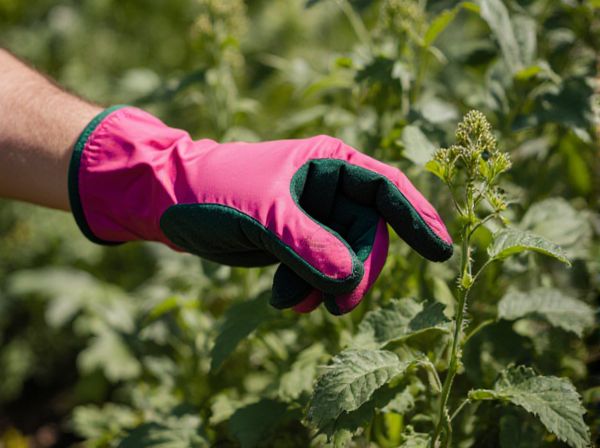
Photoblastic seeds vs Non-photoblastic seeds Illustration
Photoblastic seeds require specific light conditions to trigger germination, with positive photoblastic seeds needing exposure to light and negative photoblastic seeds inhibited by light. Non-photoblastic seeds germinate independently of light, relying primarily on other factors such as temperature, moisture, and hormonal signals. Understanding the light response in seeds is crucial for optimizing germination strategies in agriculture and horticulture.
Table of Comparison
| Feature | Photoblastic Seeds | Non-Photoblastic Seeds |
|---|---|---|
| Light Requirement | Require light to germinate | Germinate without light |
| Seed Examples | Lettuce, Spinach, Lettuce, Tobacco | Pea, Corn, Bean, Tomato |
| Germination Control | Light acts as a trigger | Triggered by moisture and temperature |
| Ecological Adaptation | Shallow soil or surface germination | Can germinate buried deep in soil |
| Photoreceptor Involvement | Phytochrome responds to red/far-red light | Minimal or no photoreceptor influence |
Introduction to Seed Germination: Light’s Role
Photoblastic seeds require specific light conditions to initiate germination, with positive photoblastic seeds needing exposure to light and negative photoblastic seeds germinating in darkness. Non-photoblastic seeds germinate independently of light, relying primarily on moisture and temperature cues. Light acts as a critical environmental signal influencing the hormonal pathways and physiological processes in photoblastic seeds during early germination stages.
Defining Photoblastic Seeds
Photoblastic seeds require specific light conditions to trigger germination, responding positively to light exposure or, in some cases, darkness. These seeds contain photoreceptors such as phytochromes that detect light quality, intensity, and duration, enabling precise environmental sensing for optimal growth. Unlike non-photoblastic seeds, photoblastic seeds depend heavily on light cues to break dormancy and initiate the germination process.
Understanding Non-photoblastic Seeds
Non-photoblastic seeds germinate independently of light exposure, allowing them to sprout under various environmental conditions, including darkness. These seeds rely primarily on temperature, moisture, and internal hormonal cues rather than light cues for the initiation of germination. Understanding the germination mechanisms of non-photoblastic seeds aids in improving agricultural practices and seed storage strategies for diverse crops.
Light Sensitivity in Seed Germination
Photoblastic seeds exhibit a strong sensitivity to light during germination, where exposure to specific light wavelengths triggers the activation of phytochromes that regulate seed sprouting. In contrast, non-photoblastic seeds germinate independently of light conditions, relying primarily on factors like moisture and temperature for successful germination. Understanding the light sensitivity of photoblastic seeds is crucial for optimizing agricultural practices and seedling establishment in various crop species.
Common Types of Photoblastic Seeds
Common types of photoblastic seeds include lettuce (Lactuca sativa), celery (Apium graveolens), and mustard (Brassica spp.), which require light to trigger germination. These seeds possess phytochromes that detect light conditions, ensuring germination occurs under optimal environmental circumstances. In contrast, non-photoblastic seeds such as beans (Phaseolus spp.) and peas (Pisum sativum) germinate independently of light exposure.
Examples of Non-photoblastic Seeds
Non-photoblastic seeds germinate regardless of light conditions, making them adaptable to various environments. Examples include pea (Pisum sativum), bean (Phaseolus vulgaris), and maize (Zea mays), which demonstrate consistent germination in both light and darkness. These seeds rely on other environmental factors like moisture and temperature to trigger germination instead of light exposure.
Practical Implications for Gardeners
Photoblastic seeds require specific light conditions for germination, which gardeners can manipulate by exposing seeds to light or keeping them in darkness to optimize sprouting rates. Non-photoblastic seeds germinate regardless of light exposure, allowing more flexibility in sowing depth and timing. Understanding these differences helps gardeners improve seedling success by tailoring planting methods to the light sensitivity of each seed type.
How to Germinate Photoblastic Seeds
Photoblastic seeds require specific light conditions to trigger germination, with positive photoblastic seeds needing exposure to light and negative photoblastic seeds requiring darkness. To germinate positive photoblastic seeds, sow them on the soil surface or lightly cover them to ensure adequate light penetration. Maintaining optimal moisture and temperature conditions while regulating light exposure is crucial for achieving successful germination rates in photoblastic seeds.
Tips for Germinating Non-photoblastic Seeds
Non-photoblastic seeds germinate effectively in the dark, making them less dependent on light exposure compared to photoblastic seeds. To optimize germination, maintain consistent moisture levels and a stable temperature range between 20-25degC, ensuring the substrate remains well-drained. Using a seed-starting mix rich in organic matter promotes healthy seedling development and reduces the risk of damping-off disease.
Choosing the Right Seeds for Your Garden Goals
Photoblastic seeds require specific light conditions to germinate, making them ideal for surface sowing and areas with ample sunlight, while non-photoblastic seeds can germinate in both light and dark, offering flexibility for deeper planting. Selecting photoblastic seeds suits gardeners aiming for precise germination timing and uniform crop establishment. Non-photoblastic seeds are preferred for gardens with variable light exposure or for subterranean planting, ensuring reliable sprouting regardless of light conditions.
Photoblastic seeds vs Non-photoblastic seeds Infographic

 gardendif.com
gardendif.com